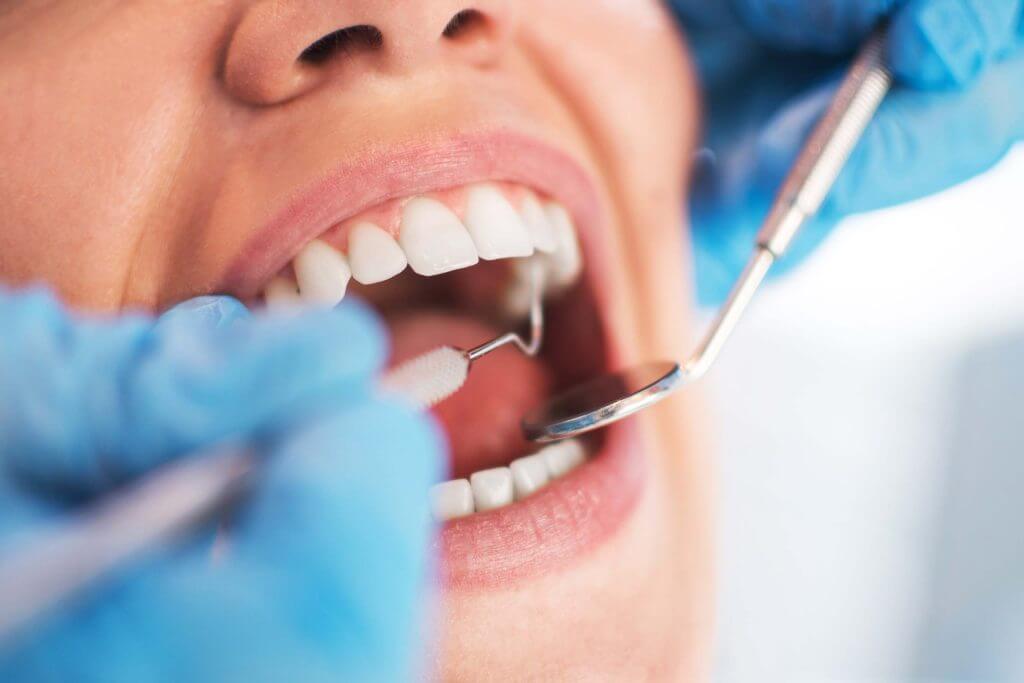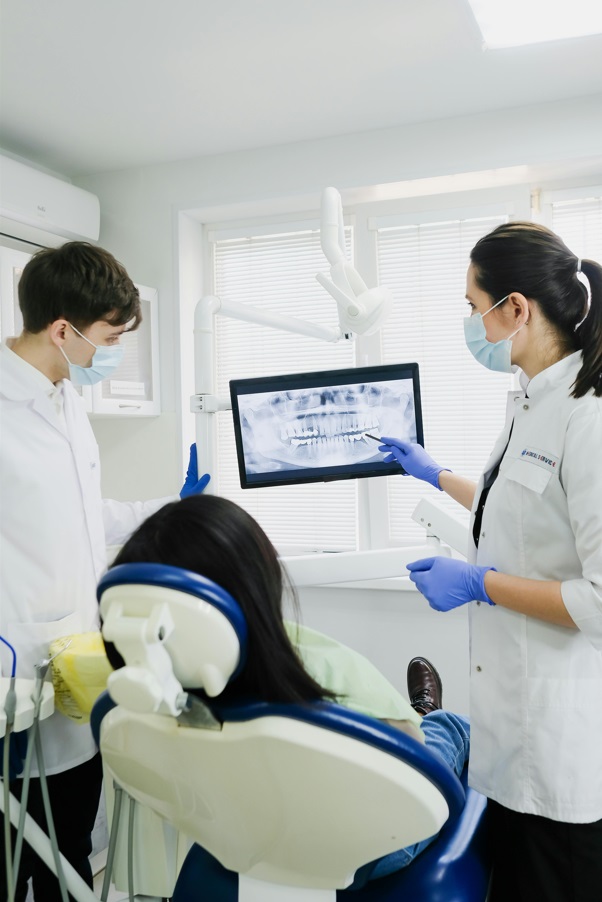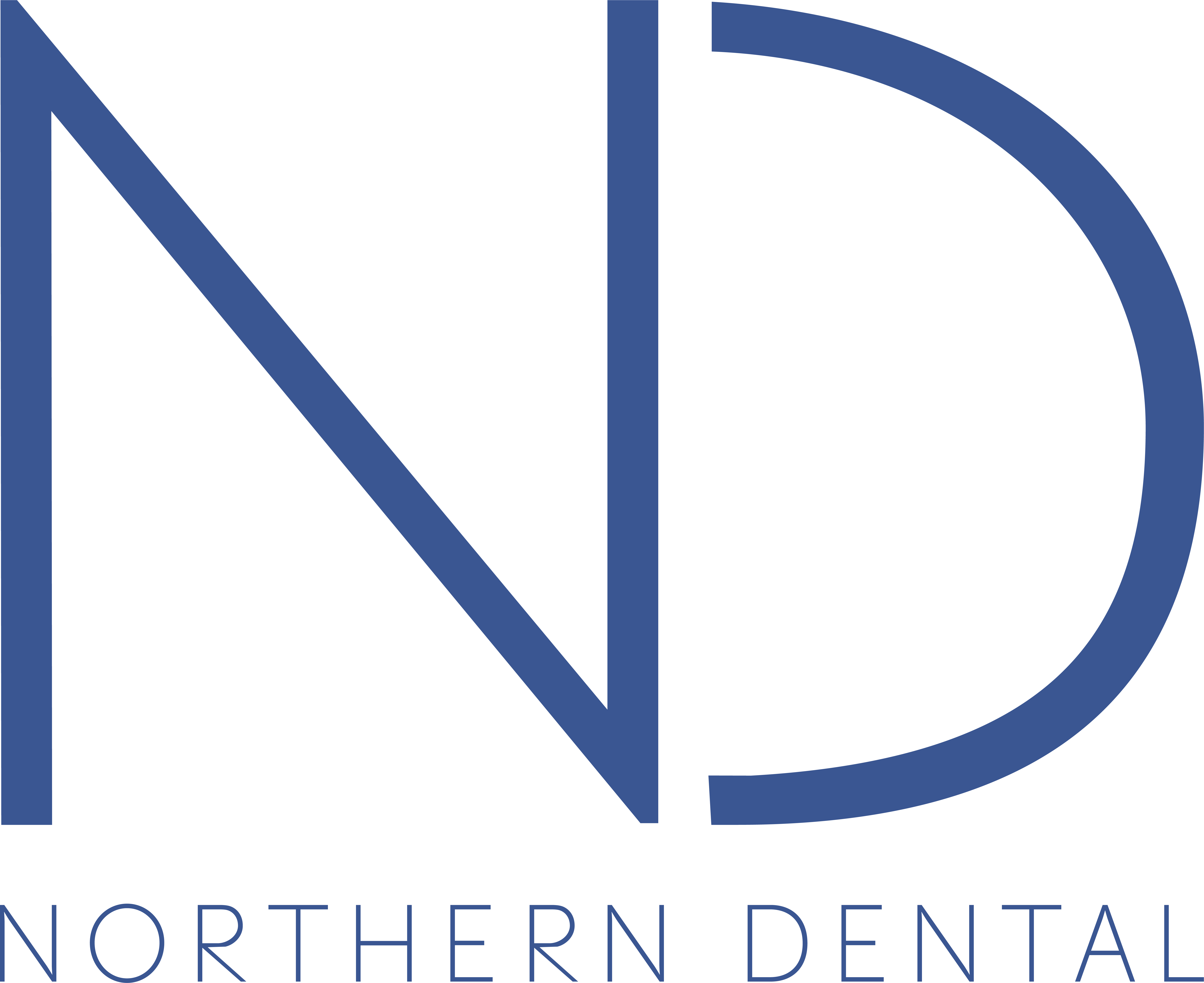DENTAL CROWNS

Are you missing a large piece of your tooth? Why do you need dental crowns?
It could be because you had an accident causing a tooth fracture, severe tooth decay or the final step of a root canal or dental implant.
At Northern Dental, we offer dental crowns designed to cover and protect the remaining structure of your tooth, so its original shape, size and colour are restored. Our crowns are custom-designed with biocompatible materials.
Our gentle, non-invasive & easy process!
Step 1
We will begin by clearing away the decay and reshaping the tooth to prepare the tooth surface.
Step 2
A 3D scan is taken of your mouth so our team can customise a crown for your teeth.
Step 3
Gently we will place the crown to ensure it fits perfectly.
Answers to Commonly Asked Questions Before Your Dental Crown Appointment
A dental crown is a covering that fits over your existing tooth to make it look and feel like a normal tooth. Crowns are often placed when a tooth is cracked or has lost its structure so that it can’t hold a filling.
You may need a dental crown if you experience any of the following: A crown can prevent a weak or loose tooth from damage or hold a cracked tooth together. Crowns can support and strengthen a broken or worn-down tooth. If you have advanced tooth decay, there may not be enough tooth remaining for a filling to be suitable. A crown may be needed to strengthen teeth and prevent further damage. Crowns can also cover teeth for cosmetic reasons, such as misshapen or severely discoloured teeth.
The number of appointments required for a dental crown can vary depending on several factors, including the complexity of the case and the specific treatment plan the dentist recommends. However, in general, the process typically involves two appointments:
First Appointment (Preparation Appointment): The dentist will prepare the tooth to receive the crown during this initial visit. This may involve removing decay or damaged portions of the tooth, reshaping it to accommodate the crown, and taking impressions or digital scans to create a custom-fitted crown. A temporary crown may also be placed to protect the prepared tooth while the permanent crown is being fabricated in a dental laboratory.
Second Appointment (Placement Appointment): At the second appointment, usually scheduled a few weeks later, the temporary crown, if placed, will be removed, and the permanent crown will be checked for fit, colour, and aesthetics. Once approved, the dentist will cement or bond the crown, making necessary adjustments to ensure proper bite alignment and comfort. In some cases, additional appointments may be necessary, such as if adjustments are needed to the crown or if complications arise during the process. However, the two-appointment process is the most common for dental crown placement.
If your dental crown feels loose or uncomfortable, it’s important to take action promptly to prevent further complications. Here’s what you should do:
Contact Your Dentist: Reach out to your dentist as soon as possible to schedule an appointment. Inform them about your situation and explain that your dental crown feels loose or uncomfortable. Your dentist will advise you on the next steps based on your situation.
Avoid Chewing on the Crown: Until you can see your dentist, avoid chewing on the side of your mouth with the loose crown. This can help prevent further damage or dislodgment of the crown.
Inspect the Crown: If possible, carefully inspect the loose crown to see if you notice any visible damage or if it has come completely off the tooth. Do not attempt to reattach the crown yourself, as this can cause more harm.
Keep the Crown Safe: If the crown has come off completely, try to keep it safe and clean. You can place it in a small container or plastic bag to bring it with you to your dental appointment.
Before your dental crown appointment, there are a few things you can do to prepare and ensure a smooth experience:
Eat a Meal: Depending on the timing of your appointment, it’s a good idea to eat a meal beforehand, especially if you’ll be receiving anaesthesia or if your appointment is later in the day.
Brush and Floss: Maintain good oral hygiene by brushing and flossing your teeth before your appointment. This helps ensure a clean mouth and may make the procedure more comfortable for you and your dentist.
Arrive Early: Plan to arrive a few minutes early for your appointment to allow time for check-in and any necessary paperwork.
Bring Necessary Items: Remember to bring your dental insurance information, identification, and any forms or documents requested by your dentist.
Prepare Questions: If you have any questions or concerns about the procedure, write them down beforehand so you can discuss them with your dentist during your appointment.
Arrange Transportation: If you are receiving sedation or anaesthesia during the procedure, arrange for someone to drive you home afterwards, as you may be tired or disoriented.
Taking these steps before your dental crown appointment can help ensure a successful and stress-free experience.
Generally, eating and drinking before a dental crown procedure is usually fine unless your dentist instructs explicitly otherwise. However, there are a few considerations to keep in mind:
Comfort and Convenience: Eating a light meal or snack before your appointment can help ensure you’re comfortable during the procedure and prevent hunger or low blood sugar levels.
Avoid Staining Foods and Drinks: If your dental crown is placed on a front tooth or in a visible area of your mouth, you may want to avoid consuming foods or drinks that could stain your teeth before your appointment. This includes coffee, tea, red wine, and highly pigmented foods like berries or tomato sauce.
Follow Dentist’s Instructions: If your dentist provides specific instructions regarding eating and drinking before your dental crown procedure, follow them carefully. Your dentist’s recommendations may vary depending on your situation and the type of anaesthesia or sedation used. If you need to decide whether to eat or drink before your dental crown appointment, it’s always best to consult your dentist for personalised guidance based on your specific needs and circumstances.
During the dental crown procedure, you can expect the following steps:
Preparation: Your dentist will start by numbing the tooth and surrounding area with a local anaesthetic to ensure you’re comfortable during the procedure. Once the area is numb, the dentist prepares the tooth for the crown. This may involve removing any decayed or damaged tooth portions and reshaping them to create a suitable foundation for the crown.
Impressions or Digital Scans: After the tooth has been prepared, your dentist will take impressions or digital scans of the tooth to create a custom-fitted crown. A dental laboratory will fabricate the permanent crown with these impressions or scans.
Temporary Crown Placement: While the permanent crown is being fabricated, your dentist may place a temporary crown to protect the prepared tooth and maintain its function and appearance. Temporary crowns are usually made from acrylic or stainless steel and are intended to be worn for a few weeks until the permanent crown is ready.
Fabrication of Permanent Crown: The impressions or digital scans taken during your appointment will be sent to a dental laboratory, where skilled technicians will fabricate your permanent crown. This process typically takes a few weeks.
Final Crown Placement: Once the permanent crown is ready, you’ll return to your dentist’s office for the final placement appointment. Your dentist will remove the temporary crown (if one was placed) and check the fit, colour, and aesthetics of the permanent crown. If any adjustments are needed, your dentist will make them before cementing or bonding the crown.
Bite Adjustment: After the crown has been cemented or bonded, your dentist will check your bite to ensure proper alignment and function. They may make additional adjustments to ensure your bite feels comfortable and natural.
Post-Care Instructions: Finally, your dentist will provide you with instructions on how to care for your new crown, including recommendations for oral hygiene, diet, and follow-up appointments. It’s essential to follow these instructions carefully to ensure the longevity of your crown and maintain good oral health.
Overall, the dental crown procedure is relatively straightforward and can usually be completed in two appointments. Your dentist will guide you through each step and ensure you’re comfortable and informed throughout the entire process.

Aftercare for a Dental Crown Treatment
Northern Dental prioritises your oral health and well-being even after your Dental Crown procedure. The essential aftercare is crucial to maintaining good oral health and prolonging the longevity of your Dental Crowns.
We have prepared a comprehensive aftercare guide to assist you. Click here to see the Dental Crown aftercare guide:
